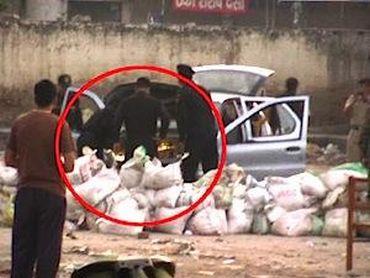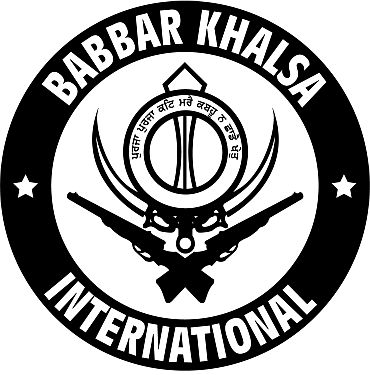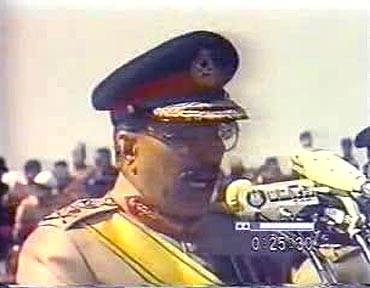 | « Back to article | Print this article |
Ambala explosive seizure: Is the ISI reviving the K-2 project?
Investigators have said that the recovery of explosives from a vehicle in Ambala indicates that the Babbar Khalsa International is trying to make a comeback. But the organisation has had a longstanding relationship with Pakistan's Inter-Services Intelligence, says B Raman.
Acting on an alert from the Delhi police, the Haryana police seized a car containing concealed explosives (about 5 kg), five detonators and two timers which had been parked in a parking lot of the Ambala Railway Station on October 13, 2011.
The owners of the car and those responsible for keeping the explosive, detonators and timers in the car have not yet been found. The source information of the Delhi Police is that the car had probably come to Ambala from the Jammu area and that the improvised explosive device materials found in the car were meant to be used for causing an explosion in Delhi around Diwali (October 25-26).
The Delhi police's source information is that the explosive materials were intended to be used in a joint operation of the Lashkar-e-Tayiba and the Babbar Khalsa International.
Click NEXT to read further...
Ambala explosive seizure: Is the ISI reviving the K-2 project?
Of the various Khalistani terrorist organisations, the BKI, after the Dal Khalsa, has had the longest history of contacts with the ISI. Talwinder Singh Parmar of the BKI, Vancouver, who had masterminded the blowing-up of the Kanishka aircraft of Air India in June 1985, had been given shelter in Palistan by the ISI after the terrorist attack on the plane.
In 1992, one of the Western intelligence agencies established his presence in Pakistan. The ISI asked him to leave Pakistan. He crossed over into Indian Punjab, where he was killed in an encounter by the Punjab Police. Since then, other BKI leaders such as Wadhwa Singh had been living in Pakistan.
The ISI started helping the various Khalistani organisations such as the Dal Khalsa, the BKI and the International Sikh Youth Federation in the 1970s with a view to using them to destabilise Punjab. They were given training assistance and supplied with arms and ammunition and explosives.
Click NEXT to read further...Ambala explosive seizure: Is the ISI reviving the K-2 project?
The ISI believed that the destabilisation of Punjab would weaken the ability of the Indian security forces to deal with terrorism in Jammu and Kashmir, and thereby facilitate a change of the status quo in J&K.
The ISI was helping the Khalistani terrorists directly, as well as through the Jamaat-e-Islami. In addition, when Nawaz Sharif was the chief minister of Punjab after the death of General Zia-ul-Haq in 1988, the Khalistani terrorists were also in receipt of assistance from the Special Branch of the Punjab Police.
Click NEXT to read further...
Ambala explosive seizure: Is the ISI reviving the K-2 project?
The ISI had code-named the operation for using the Khalistani terrorists to destabilise Punjab and weaken the capability of the Indian security forces in J&K as the K-2 project, meaning the Kashmir-Khalistan project.
The JEI and jihadi terrorist organisations under the control of the ISI such as the LeT were also sought to be used for the execution of the K-2 project.
The recovery of the explosive-laden car and the source information of the Delhi Police indicate an attempt by the ISI to revive the K-2 project.


